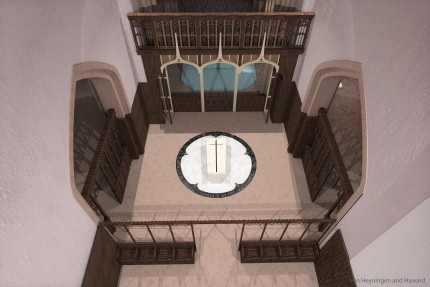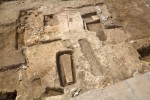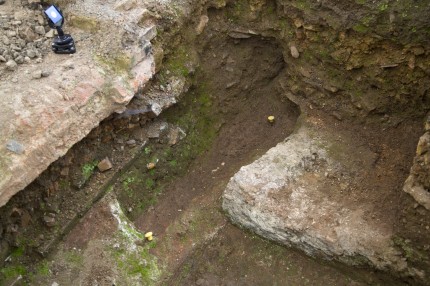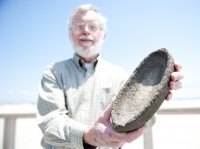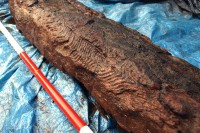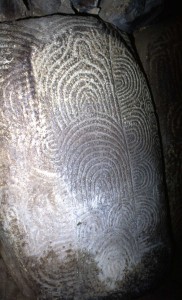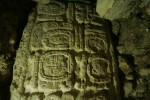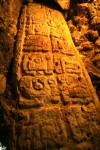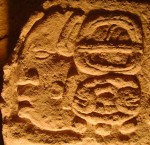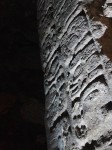 The only remaining copy of Schindler’s List in private hands is on the market again, three years after it was first sold by the heirs of Itzhak Stern, Oskar Schindler’s accountant and right hand man. This time it’s being on offered to pre-qualified buyers only on eBay, of all places, with a $3 million starting bid. Again it’s Gary Zimet and Eric Gazin of autograph dealers Moments in Time brokering the sale for the same anonymous seller who bought it three years ago when it priced at $2.2 million. He purchased it as an investment and I guess he’s ready to cash in now.
The only remaining copy of Schindler’s List in private hands is on the market again, three years after it was first sold by the heirs of Itzhak Stern, Oskar Schindler’s accountant and right hand man. This time it’s being on offered to pre-qualified buyers only on eBay, of all places, with a $3 million starting bid. Again it’s Gary Zimet and Eric Gazin of autograph dealers Moments in Time brokering the sale for the same anonymous seller who bought it three years ago when it priced at $2.2 million. He purchased it as an investment and I guess he’s ready to cash in now.
“Some real deep pockets shop on Ebay,” Gazin told ABC News. “We feel this type of valuable needs to be exposed to a different type of auction.”
Gazin said the auction is only open to pre-qualified bidders because he needs to vet that they actually have $3 million to spend. He has already received several inquiries, he said, but declined to provide the identities of those who were interested.
There are no bids showing on the page itself right now. Nonetheless, Zimet and Gazin hope the purchase price will rise to $5 million by the time the auction is over on July 28th.
 This is one of seven original lists typed by Itzhak Stern and given to Nazi authorities. On the lists were Jewish employees (in a manner of speaking; this was slave labor) of an enamelware factory owned by Oskar Schindler, a Sudeten German, Czech national and member of the Nazi Party who bribed and charmed other Nazis into keeping his workers out of the death camps. Only five of the typed lists are known to have survived. Two are in the Yad Vashem Holocause Museum in Israel, one is in the Holocaust Museum in Washington D.C., one is a government archive in Koblenz, Germany, and the last is the privately held one which is now on eBay.
This is one of seven original lists typed by Itzhak Stern and given to Nazi authorities. On the lists were Jewish employees (in a manner of speaking; this was slave labor) of an enamelware factory owned by Oskar Schindler, a Sudeten German, Czech national and member of the Nazi Party who bribed and charmed other Nazis into keeping his workers out of the death camps. Only five of the typed lists are known to have survived. Two are in the Yad Vashem Holocause Museum in Israel, one is in the Holocaust Museum in Washington D.C., one is a government archive in Koblenz, Germany, and the last is the privately held one which is now on eBay.
 This list is 14 pages long and lists 801 male names (the number on the final list would be 1,200, 200 of them workers at a textile factory owned by Julius Madritsch, a Viennese businessman who also stuck his neck out to save Jewish lives). It’s dated April 18, 1945, and was typed on onion skin paper. The fact that so delicate an artifact has survived war and 68 years is a testament to Stern’s dedication and that of his descendants.
This list is 14 pages long and lists 801 male names (the number on the final list would be 1,200, 200 of them workers at a textile factory owned by Julius Madritsch, a Viennese businessman who also stuck his neck out to save Jewish lives). It’s dated April 18, 1945, and was typed on onion skin paper. The fact that so delicate an artifact has survived war and 68 years is a testament to Stern’s dedication and that of his descendants.
 Stern’s dedication to Schindler was just as powerful. He and other Schindler Jews supported him for years after the war when all his businesses failed. At a 1962 reunion of Schindler survivors in Israel, Stern’s spoke about Oskar’s efforts on behalf of Krakow’s Jews and they went far beyond the list. He warned them when they were about to be driven into the ghetto, rescued people from trains destined for concentration camps, was the only German to visit the Budapest Rescue Committee (a Zionist group who worked to rescue Hungarian Jews during the Nazi occupation of Hungary) to tell them what was happening to Polish Jews, even built a Jewish cemetery following all religious strictures to inter just one Jewish woman who had died of natural causes but was going to cremated by the Nazis against Jewish tradition. That was the only Jewish cemetery established in occupied Europe.
Stern’s dedication to Schindler was just as powerful. He and other Schindler Jews supported him for years after the war when all his businesses failed. At a 1962 reunion of Schindler survivors in Israel, Stern’s spoke about Oskar’s efforts on behalf of Krakow’s Jews and they went far beyond the list. He warned them when they were about to be driven into the ghetto, rescued people from trains destined for concentration camps, was the only German to visit the Budapest Rescue Committee (a Zionist group who worked to rescue Hungarian Jews during the Nazi occupation of Hungary) to tell them what was happening to Polish Jews, even built a Jewish cemetery following all religious strictures to inter just one Jewish woman who had died of natural causes but was going to cremated by the Nazis against Jewish tradition. That was the only Jewish cemetery established in occupied Europe.
It was used again in January 1945 when Schindler saved 107 skeletal and frostbitten Jews from cattle cars transporting them from Auschwitz and back again. There were 13 who did not survive that brutal journey without food and water in the dead of winter. The SS were going to burn them, but Schindler bribed and cajoled the authorities into allowing the dead to be buried according to Jewish tradition in that little cemetery.
